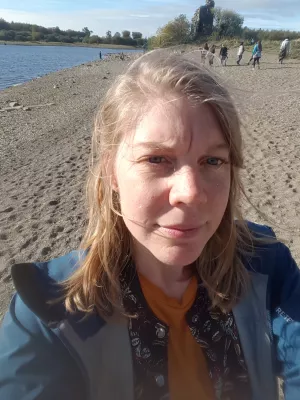
Veronica Hederström
Forskare

The role of pollinators, pests and different yield components for organic and conventional white clover seed yields
Författare
Summary, in English
A high and stable seed production of both organic and conventional white clover (Trifolium repens L.) is needed to meet market requirements. Seed yields of white clover are, however, known to vary greatly, and organic yields are often considerably lower than conventional yields. Our aim in this study was to estimate the roles of pollinators, pests and different yield components for organic and conventional white clover seed yields. We surveyed pollinators (honey bees, bumble bees and solitary bees), reared the main insect pests (Protapion fulvipes Geoffroy and Hypera spp. weevils) from flowers and measured the yield components (inflorescences per area, flowers per inflorescence, seeds per flower and weight per seed) in organic, conventional untreated and conventional insecticide treated plots in 27 white clover seed fields over two years in southernmost Sweden. Unexpectedly, densities of bees other than honey bees were higher in insecticide treated plots compared to organic plots, but pollinator densities were not related to seed set. The lower pollinator visitation in organic plots might have been caused by pest damage to the flowers, as P. fulvipes and Hypera spp. weevils were more common in organic plots than in conventional insecticide treated plots. The abundances of both P. fulvipes and Hypera spp. weevils were negatively related to seed set, with P. fulvipes being most damaging for seed set. Seed yield was considerably lower (42%) in organic plots compared to conventional insecticide treated plots, and this was driven by a lower (36%) seed set. Taken together, our results indicate that pollinator densities are not limiting yields in either conventional or organic white clover seed production, whereas P. fulvipes crop damage is an important factor limiting organic yields via negative effects on seed set. Research efforts to raise white clover seed yield with minimized environmental impacts should include a focus on integrated pest management of P. fulvipes, including the development of control methods accepted in organic farming.
Avdelning/ar
- Feromongruppen
- BECC: Biodiversity and Ecosystem services in a Changing Climate
- Biologiska institutionen
- Biodiversitet och bevarandevetenskap
Publiceringsår
2017-08-15
Språk
Engelska
Sidor
1-8
Publikation/Tidskrift/Serie
Field Crops Research
Volym
210
Dokumenttyp
Artikel i tidskrift
Förlag
Elsevier
Ämne
- Horticulture
Nyckelord
- Apis mellifera
- Integrated pest management
- Protapion fulvipes
- Trifolium repens
Status
Published
Projekt
- Biological control of insect pests in clover seed crops
Forskningsgrupp
- Pheromone Group
- Biodiversity and Conservation Science
ISBN/ISSN/Övrigt
- ISSN: 0378-4290